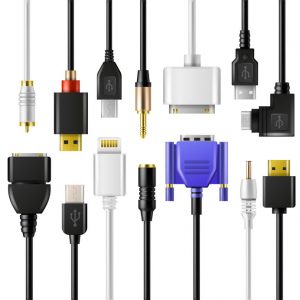Desktop computers and mobile devices are everywhere and we use them every day to perform tasks through their inbuilt functionalities, but in most cases, we use our digital devices to connect to other digital devices and to obtain information or to perform tasks through digital networks. Digital networks vary in type and size – most home networks can manage up to 20 devices, corporate networks allow for connecting thousands of devices, while the internet handles the requests coming in from billions of devices every second. The types of devices that can be connected include not only computers and mobile devices – peripheries, such as scanners and printers are often connected to networks as well, allowing users to perform tasks on them remotely.

Whatever the size and the complexity, any digital network needs digital units that are used to access the network and most likely hdmi or vga cable connection components to enable the access. In the case of a network used in your home or by a company, the connection is established through cables and switches and probably one or several central servers. Connection to the worldwide web is very similar, the difference to be accounted for being graspable in the immense number of digital devices requesting the exchange of information through the network.





